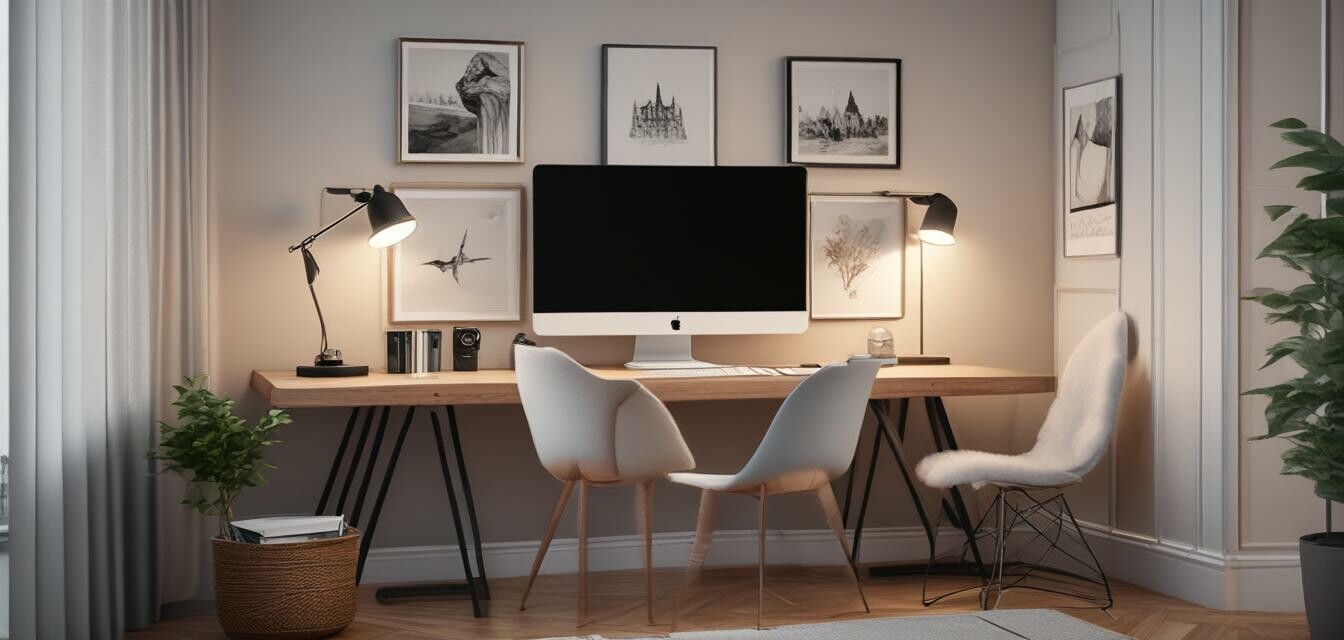
How to reduce noise in your home office
Key Takeaways
- Identify the sources of noise in your environment.
- Utilize soundproofing materials like foam panels and curtains.
- Choose appropriate furniture that minimizes sound transmission.
- Implement organization methods to maintain a clutter-free workspace.
- Incorporate noise-cancelling technology to improve focus.
Working from home offers flexibility, but it can also present challenges, especially when it comes to managing noise distractions. Noise can significantly affect concentration and productivity, making it essential to create a workspace conducive to focus. This article will explore effective strategies for minimizing noise in your home office, ensuring you can work efficiently without disruptions.
Understanding the sources of noise
Before implementing noise reduction strategies, it's essential to identify the common sources of noise in your home office. These could be:
- Traffic noise from outside.
- Household sounds like pets, family members, or appliances.
- Electronic devices emitting sounds.
- General neighborhood noise, such as lawnmowers or construction.
Strategies to reduce noise
Once you know where the noise is coming from, you can employ various techniques to reduce it. Here are some effective strategies:
1. Soundproofing your space
One of the most effective ways to reduce sound is through soundproofing. Consider the following:
- Acoustic panels: These can be installed on walls to absorb sound. They come in various designs and colors to match your decor.
- Soundproof curtains: Thick, heavy curtains can also dampen sound from outside. They work effectively in both blocking light and sound.
- Insulation: If you're planning significant renovations, you may consider adding insulation to walls to reduce noise transmission.
2. Choosing the right furniture
Believe it or not, the furniture in your home office can impact noise levels:
- Rug placement: Placing rugs on hardwood or tile floors can help absorb sound.
- Heavy bookshelves: A tall bookcase filled with books can act as a sound barrier between your workspace and the source of noise.
- Soft furnishings: Chairs and cushions made from soft fabrics can help reduce noise levels by absorbing sound.
3. Organization and clutter management
A tidy workspace can improve your ability to concentrate:
- Keep your desk organized by decluttering regularly.
- Use drawers or decorative boxes to store items out of sight.
- Designate specific areas for different tasks to avoid distractions.
4. Incorporating technology
To further enhance your focus, consider technological solutions:
- Noise-cancelling headphones: These can be highly effective if external noise is unavoidable.
- White noise machines: These devices help mask disruptive sounds and create a consistent auditory environment.
- Soft background music: Playing gentle music can drown out distracting noises without becoming a distraction itself.
Pros
- Improved focus and productivity.
- Creates a calmer working environment.
- Potentially beneficial for mental well-being.
Cons
- Some solutions may require a financial investment.
- Potential time-consuming setup.
- Not all solutions are suitable for every space.
Conclusion
Reducing noise in your home office is crucial for maintaining productivity and focus. By implementing soundproofing measures, choosing the right furniture, staying organized, and utilizing technology, you can create a workspace that minimizes distractions and allows for greater concentration. For more tips on creating an effective workspace, check out our Buying Guides or explore our Office Desks for the best furniture options. Whatever strategies you choose, investing in a quieter workspace is sure to enhance your work-from-home experience.